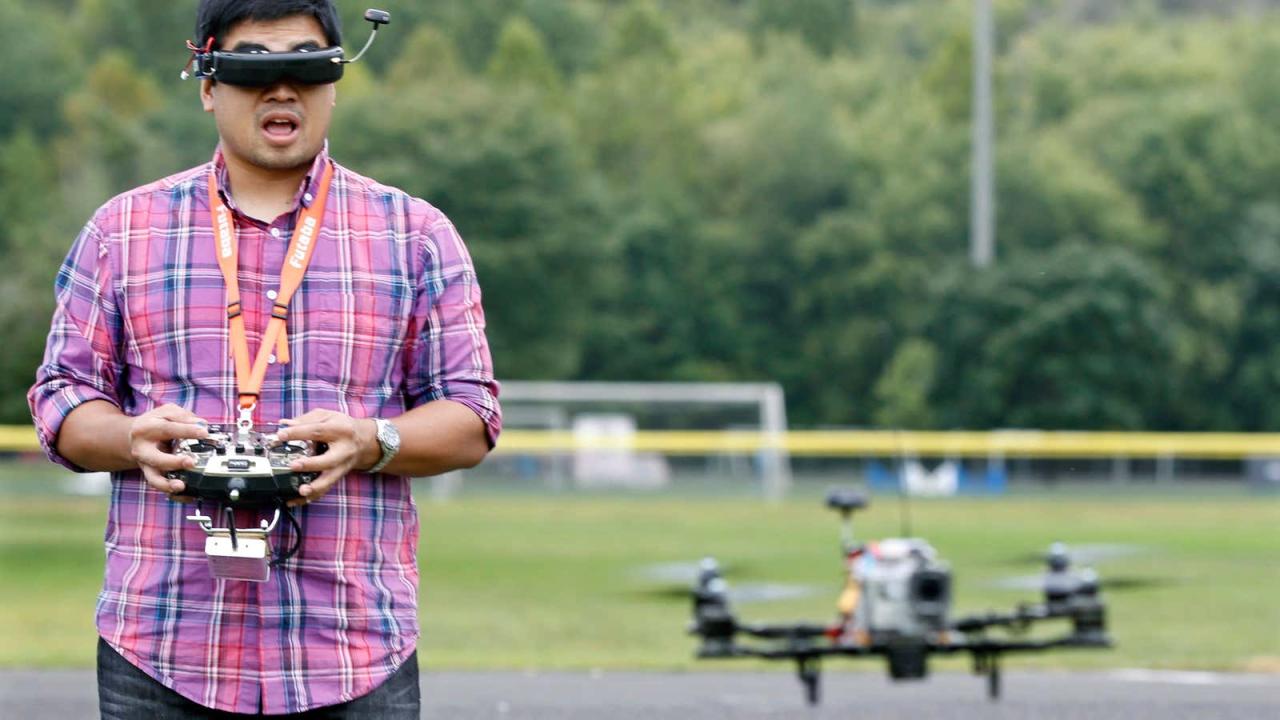Amazon drone delivery locations are rapidly expanding, revolutionizing how we receive packages. This innovative approach offers faster delivery times and reduced environmental impact compared to traditional methods, but also presents unique logistical and regulatory challenges. This exploration delves into the current state of Amazon’s drone delivery program, examining the factors influencing location selection, future expansion plans, and the broader societal implications.
We’ll cover everything from the technological infrastructure supporting these deliveries to the community impact and safety regulations involved. Understanding the intricacies of Amazon’s drone delivery network provides insight into the future of e-commerce and last-mile logistics.
Current Amazon Drone Delivery Program Status
Amazon’s drone delivery program, officially known as Amazon Prime Air, is still in its relatively early stages, but it’s steadily expanding its reach and capabilities. While not yet a widespread service, it represents a significant step towards faster and more efficient delivery solutions. This section details the current state of the program, including its geographical limitations, the types of goods it handles, and the underlying technology.Amazon Prime Air’s geographical scope is currently limited.
It operates in select areas of the United States, primarily focusing on suburban and rural communities where the regulatory environment and infrastructure are more conducive to drone operations. The program isn’t available in major metropolitan areas due to airspace complexities and regulatory hurdles. Expansion is gradual and depends on regulatory approvals and infrastructure development.
Eligible Goods for Drone Delivery
The types of goods currently eligible for Amazon Prime Air delivery are generally small and lightweight packages. Think items like everyday essentials, small electronics, and books – things that fit comfortably within the drone’s payload capacity and are not fragile or susceptible to damage during flight. Larger or heavier items, as well as perishable goods requiring temperature control, are not yet supported.
This selection is driven by safety and operational limitations. The range of eligible items is likely to increase as drone technology improves.
Technological Infrastructure for Amazon Drone Delivery
Amazon’s drone delivery operation relies on a sophisticated technological infrastructure. This includes a fleet of autonomous drones equipped with advanced sensors, GPS, and obstacle avoidance systems. A robust network of drone hubs is crucial, acting as launch and landing sites, and charging stations for the drones. Furthermore, a complex command and control system manages the drones’ flights, monitors their status, and ensures safe operation.
Real-time tracking and communication systems are essential for monitoring deliveries and handling potential issues. The system also integrates with Amazon’s existing logistics network to seamlessly integrate drone deliveries into the overall order fulfillment process.
Speed and Cost-Effectiveness of Drone Delivery
Compared to traditional delivery methods, drone delivery offers significant potential for increased speed. In suitable areas, drones can deliver packages much faster than ground-based delivery vehicles, particularly for shorter distances. However, the cost-effectiveness is still under evaluation. While drones can potentially reduce labor costs associated with ground transportation, the initial investment in technology and infrastructure is substantial. The cost per delivery might be higher than traditional methods for individual orders, but the potential for scalability and efficiency gains in the long term is considerable.
Currently, it is more of a supplementary service, rather than a complete replacement for traditional delivery methods. For example, a drone delivery might be faster and more cost-effective for a single package to a rural location, whereas traditional methods remain more efficient for bulk deliveries to urban areas.
Factors Influencing Location Selection for Drone Delivery
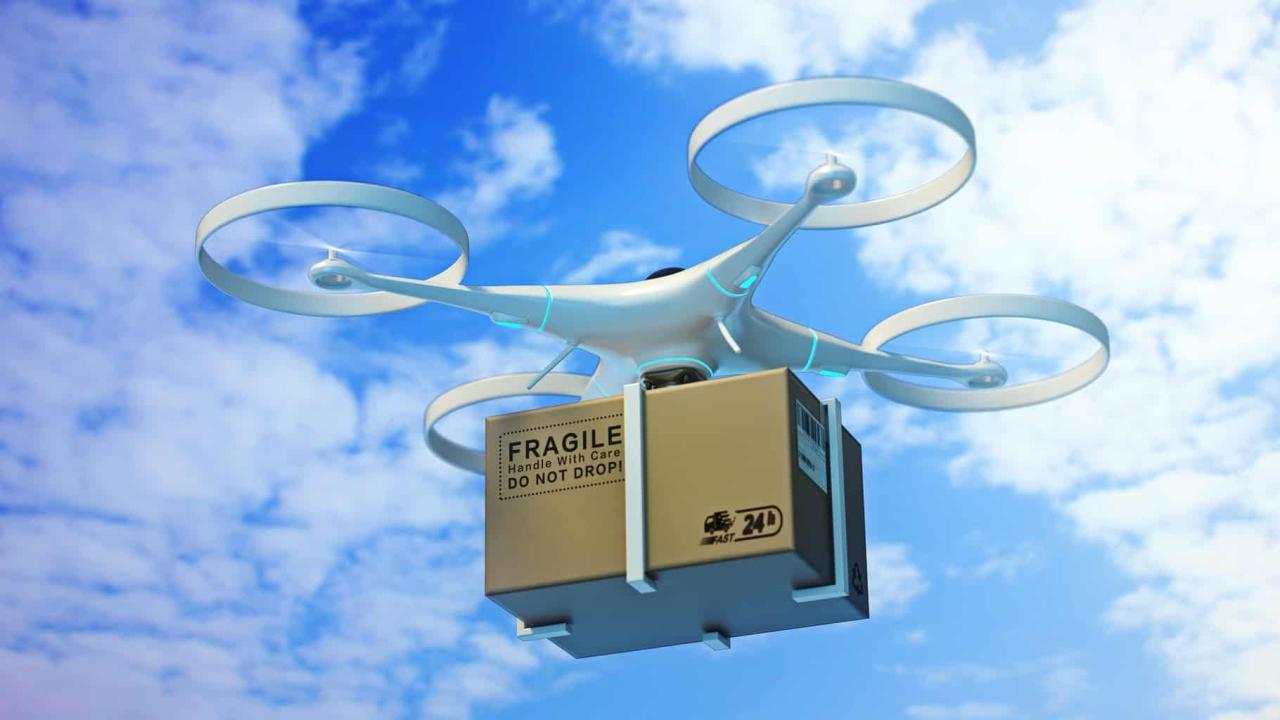
Amazon’s drone delivery program, while ambitious, requires careful consideration of numerous factors when selecting suitable locations. The ideal location balances operational efficiency with the needs of the customer base, requiring a complex interplay of logistical, regulatory, and infrastructural elements. Successful implementation hinges on choosing areas where the benefits of drone delivery significantly outweigh the challenges.
Population Density and Delivery Zones
Population density plays a crucial role in determining the viability of drone delivery zones. High-density areas, such as suburbs and certain urban environments, offer a large potential customer base within a relatively small geographical area. This increases the efficiency of delivery routes, as drones can service numerous addresses within a shorter flight time. However, densely populated areas also present significant challenges, including complex airspace management and potential safety concerns related to obstacles and unpredictable weather.
So, Amazon’s expanding its drone delivery locations, aiming for more efficient and speedy service. It makes you wonder about the logistics involved, especially when you consider something like the recent mystery drone Paris incident; that really highlights the complexities of drone operations in urban areas. Getting those Amazon packages to your door safely and quickly depends on carefully planned delivery zones and airspace management, just like any other drone operation needs to consider.
Conversely, lower-density areas, like rural communities, might require longer flight times to reach individual customers, impacting the overall cost-effectiveness of the operation. Amazon likely prioritizes areas with a balance—sufficient population density to justify the investment but with enough open space to minimize flight risks. For example, a suburban area with a grid-like street pattern and relatively open spaces might be ideal, whereas a densely packed city center with numerous tall buildings might be less suitable initially.
Infrastructure Requirements for Drone Delivery
Robust infrastructure is paramount for successful drone delivery operations. This includes reliable internet connectivity for real-time drone monitoring and control, and clear airspace regulations that accommodate drone traffic safely. Amazon needs to ensure that the chosen locations have adequate cellular or other high-speed internet coverage for uninterrupted communication with the drones. Furthermore, compliance with and cooperation from local and national aviation authorities are crucial.
Areas with established drone corridors or designated airspace for drone operations are naturally more attractive for Amazon. Lack of sufficient internet connectivity or restrictive airspace regulations can significantly hinder operations and make a location unsuitable. For instance, a location with unreliable internet could lead to lost connectivity and potential drone crashes, while a location with highly restrictive airspace rules might make efficient delivery routes impossible.
Urban Versus Rural Drone Delivery Challenges, Amazon drone delivery locations
Urban and rural environments present contrasting challenges for drone delivery. Urban areas, characterized by densely packed buildings, complex airspace, and unpredictable weather patterns, require sophisticated navigation systems and risk mitigation strategies. Safety concerns related to obstacles and people are significantly higher in urban environments. In contrast, rural areas present challenges related to longer flight distances, sparsely distributed populations, and potential limitations in internet connectivity and infrastructure.
Weather conditions can also be more unpredictable and extreme in rural locations. While urban areas offer a larger potential customer base, the operational complexity and safety concerns necessitate more advanced technology and stringent safety protocols. Rural areas, while less complex in terms of airspace, require drones with longer flight ranges and more robust weather resistance. Amazon likely adopts a phased approach, starting with areas that present a manageable balance between these challenges before tackling more complex environments.
Future Expansion of Amazon Drone Delivery Locations
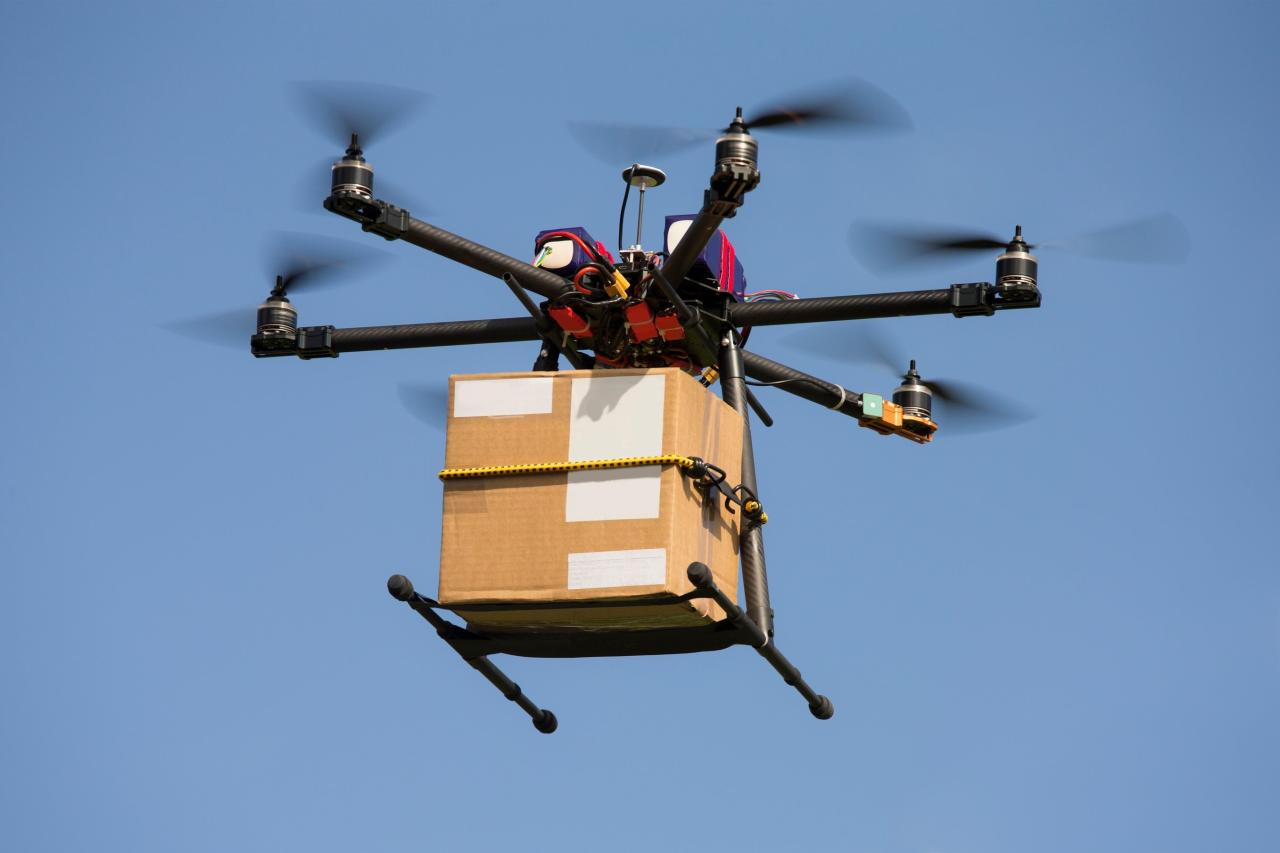
Amazon’s drone delivery program, while still in its relatively early stages, shows immense potential for reshaping last-mile delivery. Expansion will depend on a careful balancing act between technological advancement, regulatory approvals, and logistical feasibility. The following sections detail potential expansion areas, a hypothetical expansion plan, and anticipated challenges.
Potential Future Expansion Areas
Predicting future expansion hinges on several key factors. Areas with high population density, existing robust infrastructure (especially reliable internet and airspace management), and supportive regulatory environments are prime candidates. We can expect to see expansion into suburban areas surrounding existing delivery hubs, focusing initially on areas with less complex airspace and fewer obstacles. Further expansion might involve strategically targeting smaller cities and towns with reliable infrastructure and less dense air traffic, possibly in areas with a high concentration of Amazon customers or businesses.
This approach would allow Amazon to test and refine its drone delivery operations in diverse environments before tackling more complex urban landscapes. Expansion into rural areas, while presenting significant logistical challenges, could also be considered in the long term, particularly in regions with limited ground transportation options. This mirrors Amazon’s existing strategy of targeting underserved communities where other delivery methods are less efficient.
Hypothetical Expansion Plan
A phased approach to expansion is crucial. Phase 1 would focus on expanding coverage within existing operational areas, increasing delivery density and refining logistical processes. This involves adding more drone delivery hubs in suburban areas surrounding current locations, leveraging existing infrastructure and minimizing initial investment. Phase 2 would involve expanding into strategically selected smaller cities and towns, focusing on areas with a high concentration of Amazon customers and robust infrastructure.
This phase would involve establishing new drone delivery hubs and gaining experience in managing operations in diverse environments. Phase 3 could involve a more ambitious expansion into rural areas, possibly partnering with local businesses and communities to overcome logistical hurdles and gain local acceptance. This phase would necessitate significant investments in infrastructure and technology, including potentially developing specialized drones suitable for challenging terrain.
Challenges in Expanding the Drone Delivery Network
Expanding the drone delivery network presents several significant challenges. Firstly, regulatory hurdles vary significantly across different regions and countries. Obtaining necessary permits and approvals can be time-consuming and complex. Secondly, maintaining public trust and addressing concerns about safety and noise pollution is crucial for widespread acceptance. Thirdly, integrating drone delivery into existing air traffic management systems requires careful planning and coordination with aviation authorities.
Fourthly, ensuring reliable infrastructure, including robust communication networks and charging stations, is essential for efficient operations. Finally, scaling up operations while maintaining a high level of safety and reliability will require significant investment in technology, personnel, and infrastructure.
Suitability of Hypothetical Locations for Drone Delivery
The following table compares the suitability of three hypothetical locations for drone delivery:
| Location | Population Density | Infrastructure Score (1-10) | Regulatory Compliance (Ease of Obtaining Permits) |
|---|---|---|---|
| Suburban Area near Austin, TX | Medium | 8 | Medium |
| Small City in Oregon | Low | 6 | High |
| Rural Area in Montana | Very Low | 3 | Low |
Community Impact of Drone Delivery Locations
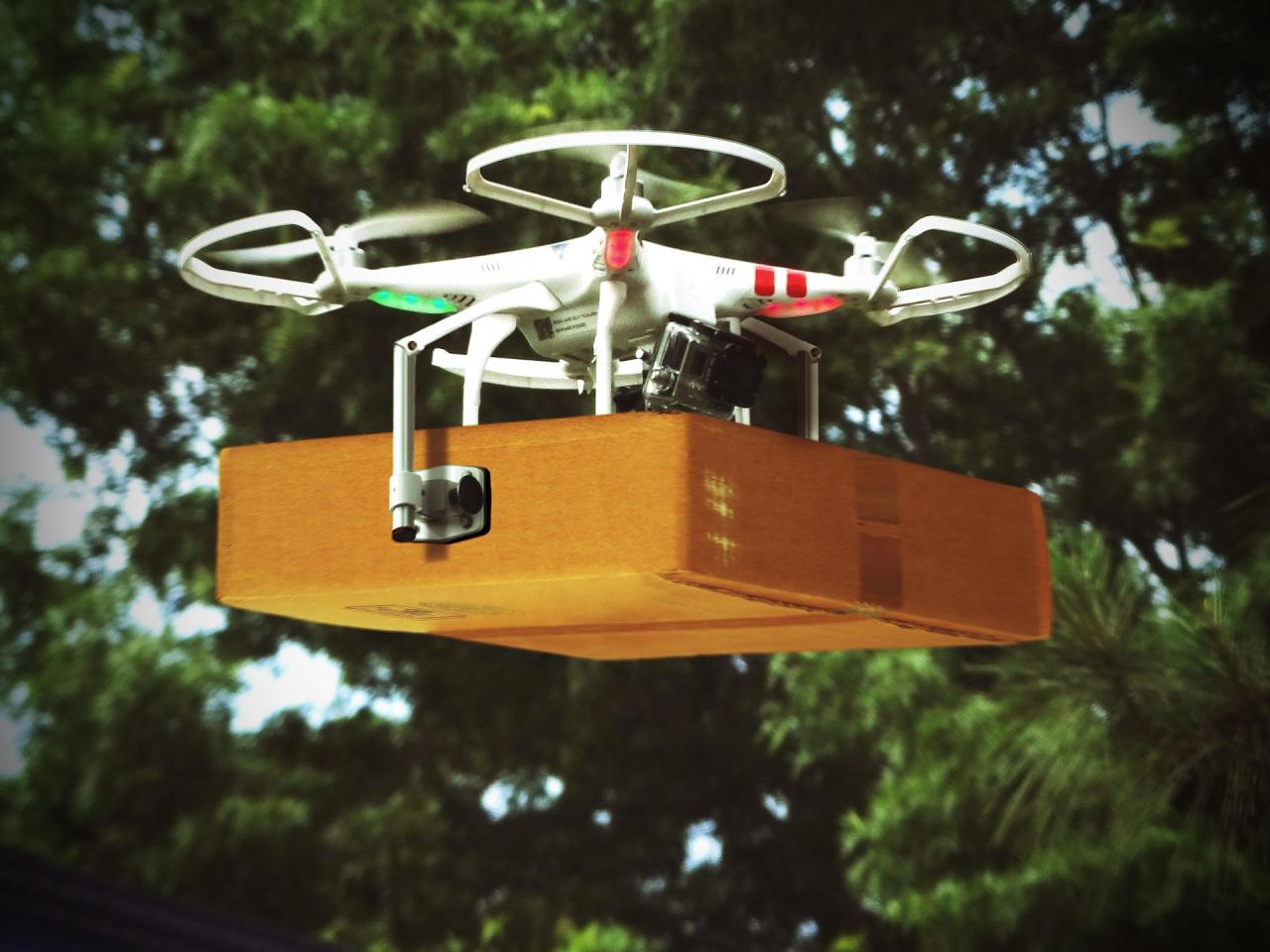
Drone delivery, while offering convenience and speed, significantly impacts the communities where it operates. Understanding these impacts – both positive and negative – is crucial for responsible implementation and community acceptance. This section explores the economic, environmental, and social dimensions of Amazon’s drone delivery program.
Economic Benefits of Drone Delivery
The introduction of drone delivery can stimulate local economies in several ways. Businesses, particularly those in rural or underserved areas with limited access to traditional delivery services, can experience increased sales and reach wider customer bases. This can lead to job creation, not only in drone operation and maintenance but also in supporting industries like packaging and logistics.
For example, a small farm-to-table restaurant in a remote area might see a significant boost in orders once drone delivery eliminates long delivery times and high transportation costs. Furthermore, the increased efficiency of drone delivery can lower overall operational costs for businesses, allowing them to potentially offer lower prices or invest in other areas of their operations. This positive ripple effect contributes to overall community prosperity.
Environmental Impacts of Drone Delivery
Drone delivery presents a complex environmental picture with both positive and negative aspects. On the positive side, the potential for reduced reliance on large delivery trucks can lead to lower greenhouse gas emissions and less traffic congestion, particularly in urban areas. Smaller, more efficient drones could significantly decrease fuel consumption compared to traditional delivery methods. However, the manufacturing and disposal of drones contribute to electronic waste, and the increased air traffic from numerous drone deliveries could generate noise pollution.
The environmental impact ultimately depends on the scale of operations, the type of drones used (battery-powered versus fuel-powered), and the overall efficiency of the delivery system. Careful consideration of sustainable practices in drone manufacturing, operation, and disposal is essential to minimize negative environmental consequences.
Social Concerns and Challenges Related to Drone Delivery
The integration of drone delivery into communities raises several social concerns. Privacy is a major issue; the use of drones equipped with cameras raises concerns about potential surveillance and data collection. Addressing these concerns requires transparent data handling practices and clear communication with the community about data usage policies. Another concern is the potential displacement of jobs in traditional delivery services.
Careful planning and retraining programs can help mitigate this impact. Furthermore, ensuring equitable access to drone delivery services is crucial; communities with limited internet access or digital literacy may be excluded from the benefits. Addressing digital equity through community initiatives and support programs is necessary for inclusive adoption. Finally, public acceptance and trust in the safety and reliability of drone delivery are essential for successful implementation.
Community Engagement Strategies for Amazon
Effective community engagement is vital for the successful integration of drone delivery. Amazon can employ various strategies to address community concerns and foster trust:
- Transparent Communication: Regularly communicate plans, data usage policies, and safety measures to the community through town halls, online forums, and local media outlets.
- Community Workshops and Education: Organize workshops and educational sessions to address community concerns, explain the technology, and showcase safety protocols.
- Addressing Job Displacement Concerns: Collaborate with local workforce development agencies to provide retraining opportunities for individuals whose jobs may be affected.
- Digital Equity Initiatives: Partner with local organizations to provide internet access and digital literacy training to underserved communities.
- Safety and Privacy Assurance: Implement robust safety protocols and data privacy measures, regularly auditing these systems for compliance and transparency.
- Feedback Mechanisms: Establish channels for community feedback and actively address concerns raised by residents.
Safety and Regulatory Aspects of Amazon Drone Delivery Locations
Amazon’s drone delivery program prioritizes safety and compliance with stringent regulations to ensure responsible and reliable operations. This involves a multi-layered approach encompassing technological safeguards, rigorous pilot training, and adherence to evolving regulatory frameworks across different jurisdictions. The system is designed to minimize risks to both people and property, while upholding privacy and data security standards.
Amazon’s Drone Safety Protocols
Amazon employs a comprehensive suite of safety protocols to mitigate risks associated with drone operations. These protocols cover various aspects of flight, from pre-flight checks to real-time monitoring and emergency response. For instance, each drone undergoes rigorous pre-flight inspections to verify the integrity of its systems. Sophisticated software constantly monitors the drone’s position, battery level, and overall health, alerting operators to potential issues.
Furthermore, multiple layers of redundancy are built into the system to ensure safe operation even in the event of individual component failure. The drones themselves are designed with multiple safety features, such as automatic return-to-home capabilities in case of communication loss or low battery. Pilots receive extensive training in drone operation, emergency procedures, and risk management, ensuring they are well-equipped to handle various situations.
Regulatory Landscape for Commercial Drone Operations
The regulatory landscape for commercial drone operations varies significantly across different countries and regions. In the United States, the Federal Aviation Administration (FAA) sets the primary regulations governing drone flights, including weight limits, operational restrictions, and pilot certification requirements. These regulations are constantly evolving as technology advances and drone operations become more commonplace. Similarly, other countries have their own regulatory bodies and specific rules governing commercial drone use.
Amazon meticulously complies with all applicable regulations in each location where it operates its drone delivery service, working closely with regulatory authorities to ensure safe and lawful operations. This includes obtaining necessary permits and licenses, adhering to airspace restrictions, and reporting any incidents according to established procedures. For example, in some areas, specific flight paths and altitudes are mandated, while in others, operational limitations may exist based on weather conditions or proximity to airports.
Amazon’s expanding drone delivery network is aiming for wider coverage, with several test locations already operational. However, incidents like the recent drone crash in Paris highlight the safety challenges involved in widespread drone use. This emphasizes the need for robust safety protocols as Amazon continues to develop its drone delivery locations and expands its operations.
Emergency Procedures for Drone Delivery Incidents
Amazon has established detailed emergency procedures to address potential incidents during drone delivery operations. These procedures are designed to ensure the safety of people and property and to minimize any potential damage or disruption. In the event of a malfunction or emergency, the drone’s automated systems may initiate a safe landing procedure, such as returning to its launch site or landing in a designated safe zone.
Trained personnel are available to monitor flights and respond to any alerts or emergencies. These personnel are equipped to take appropriate action, which may include contacting emergency services, securing the affected area, and recovering the drone. Amazon also maintains robust communication channels with local authorities to ensure effective coordination in case of incidents. The company conducts regular safety drills and simulations to ensure its personnel are well-prepared to handle various emergency scenarios effectively.
So you’re curious about where Amazon’s delivering packages via drone, huh? It’s a pretty cool system, and to find out exactly which areas are currently covered by this futuristic delivery method, check out this helpful resource on amazon drone delivery locations. Knowing these locations helps you understand the expanding reach of Amazon’s drone delivery program and how it might affect you.
Addressing Privacy and Data Security Concerns
Amazon recognizes the importance of protecting customer privacy and data security in its drone delivery operations. The company employs various measures to ensure that data collected during drone flights is handled responsibly and securely. This includes implementing robust encryption protocols to protect data transmitted between the drones and the ground control system. Amazon also adheres to strict data retention policies, only storing data for as long as necessary for operational purposes.
The company’s data handling practices are designed to comply with all relevant privacy regulations, such as GDPR and CCPA. Furthermore, Amazon uses anonymization techniques to protect the identities of individuals captured in drone imagery, ensuring that sensitive personal information is not compromised. Transparency and accountability are central to Amazon’s approach to data privacy, and the company is committed to continuously improving its data security measures to meet evolving challenges.
Illustrative Example of a Drone Delivery Location
This section details a hypothetical, ideal location for Amazon drone delivery, considering geographic factors, infrastructure needs, and community aspects. We’ll examine the environment, potential challenges, and a sample delivery route. This example aims to highlight the key considerations for successful drone delivery operations.
Imagine a suburban area nestled within a gently rolling landscape, characterized by a grid-like street pattern and relatively uniform housing density. The area is sparsely populated with trees, offering ample open airspace for drone flight. The community is affluent, with high internet penetration and a generally tech-savvy population, making them receptive to new technologies like drone delivery. The climate is mild, with minimal extreme weather events that could disrupt operations.
The area is also relatively flat, reducing the complexity of drone navigation.
Ideal Location Characteristics
The hypothetical location is characterized by several key features. First, its relatively flat terrain minimizes the challenges of altitude changes and wind gusts that can affect drone stability and flight time. Second, the grid-like street pattern simplifies route planning and navigation for the drones. Third, the suburban setting, with its relatively low building heights, reduces the risk of collisions and simplifies obstacle avoidance.
Fourth, the high internet penetration ensures reliable communication between the drones and the control center. Finally, the affluent and tech-savvy population is more likely to accept and adopt drone delivery services, leading to higher adoption rates.
Potential Challenges and Mitigation Strategies
Despite its ideal characteristics, the location presents some challenges. For instance, even with sparse tree cover, unexpected obstacles such as power lines and tall structures might still exist. Addressing this requires thorough pre-flight mapping and route planning, incorporating real-time obstacle detection systems in the drones. Furthermore, ensuring the safety of drone operations near residential areas necessitates robust safety protocols, including geofencing and emergency landing procedures.
Another challenge could be the potential for noise complaints from residents. This can be mitigated by using quieter drone models and implementing optimized flight paths to minimize noise pollution.
Sample Drone Delivery Route
Let’s visualize a sample delivery route. The drone departs from a designated drone hub located at the edge of the community, near a major road with easy access. The hub is equipped with charging stations and maintenance facilities. The drone follows a pre-programmed route, navigating along the streets, avoiding obstacles such as trees and buildings. The drone uses GPS and visual sensors for navigation, making adjustments based on real-time data.
It makes a delivery to a house on Elm Street, then continues to Oak Avenue, making another delivery. Finally, it returns to the hub, completing the delivery cycle. A key landmark in this route is a large park at the center of the community, used as a reference point by the drone navigation system.
Visual Representation of Drone Delivery Route
Imagine a grid of streets represented by lines. The drone hub is at the bottom-left corner (A). The drone flies along the horizontal lines (streets) to point B (Elm Street delivery), then vertically to point C (Oak Avenue delivery), before returning to A. The large park is located near the center of the grid, acting as a visual reference point.
The route is shown as a series of connected lines representing the drone’s flight path. Potential obstacles, such as a tall tree (represented by a ‘T’) and a power line (represented by a ‘–‘), are clearly indicated along the route. The drone’s path would avoid these obstacles using its onboard sensors and pre-programmed flight plan.
A —- B | T | C | | | Park | | | A——-
Ending Remarks: Amazon Drone Delivery Locations
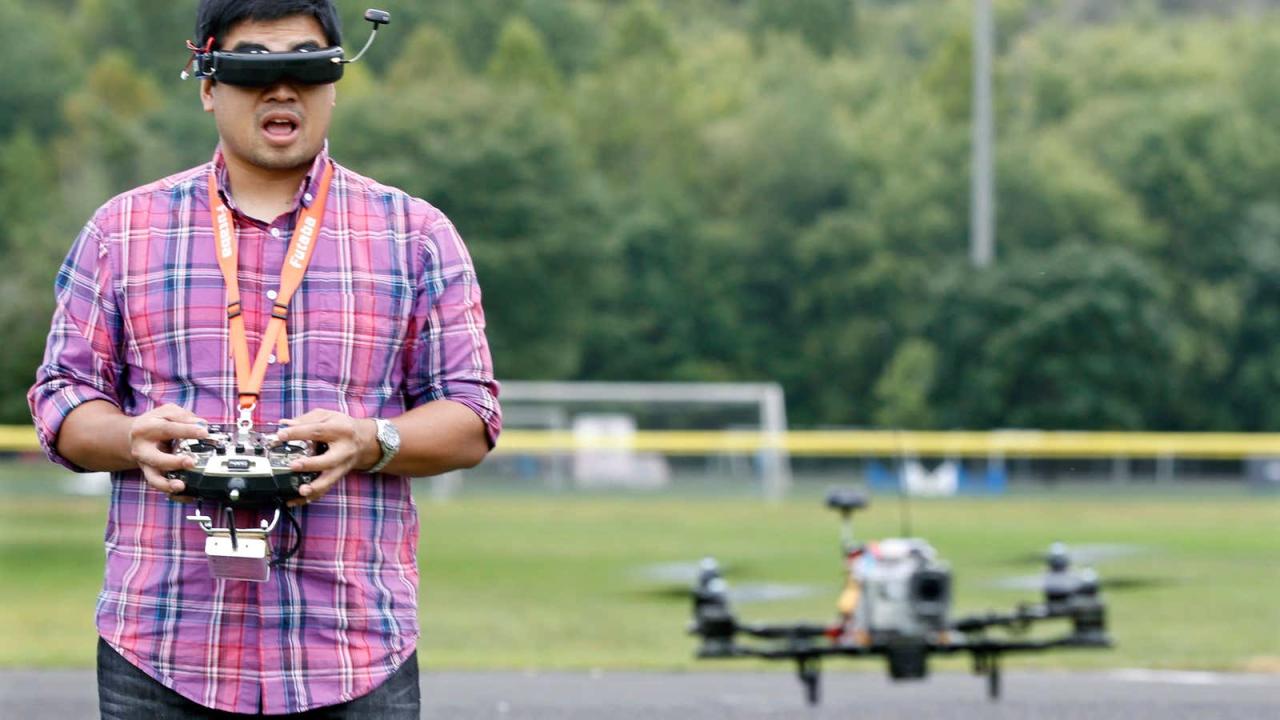
Amazon’s drone delivery program represents a significant leap forward in logistics, promising faster, more efficient, and potentially more environmentally friendly deliveries. While challenges remain in terms of regulatory hurdles, infrastructure requirements, and community acceptance, the potential benefits are substantial. As technology advances and regulations adapt, we can expect to see a continued expansion of Amazon drone delivery locations, reshaping the landscape of e-commerce delivery as we know it.
Popular Questions
How much does Amazon drone delivery cost?
Currently, Amazon doesn’t charge extra for drone delivery; it’s integrated into the standard shipping cost.
What if my drone delivery is damaged?
Amazon’s standard return and refund policies apply to drone deliveries. Report any damage immediately.
What happens if a drone malfunctions mid-flight?
Amazon employs sophisticated safety protocols and has emergency procedures in place, including fail-safes and remote intervention capabilities to ensure safe landings.
Can I track my drone delivery?
Yes, you’ll receive tracking information similar to standard Amazon deliveries, allowing you to monitor the drone’s progress.
